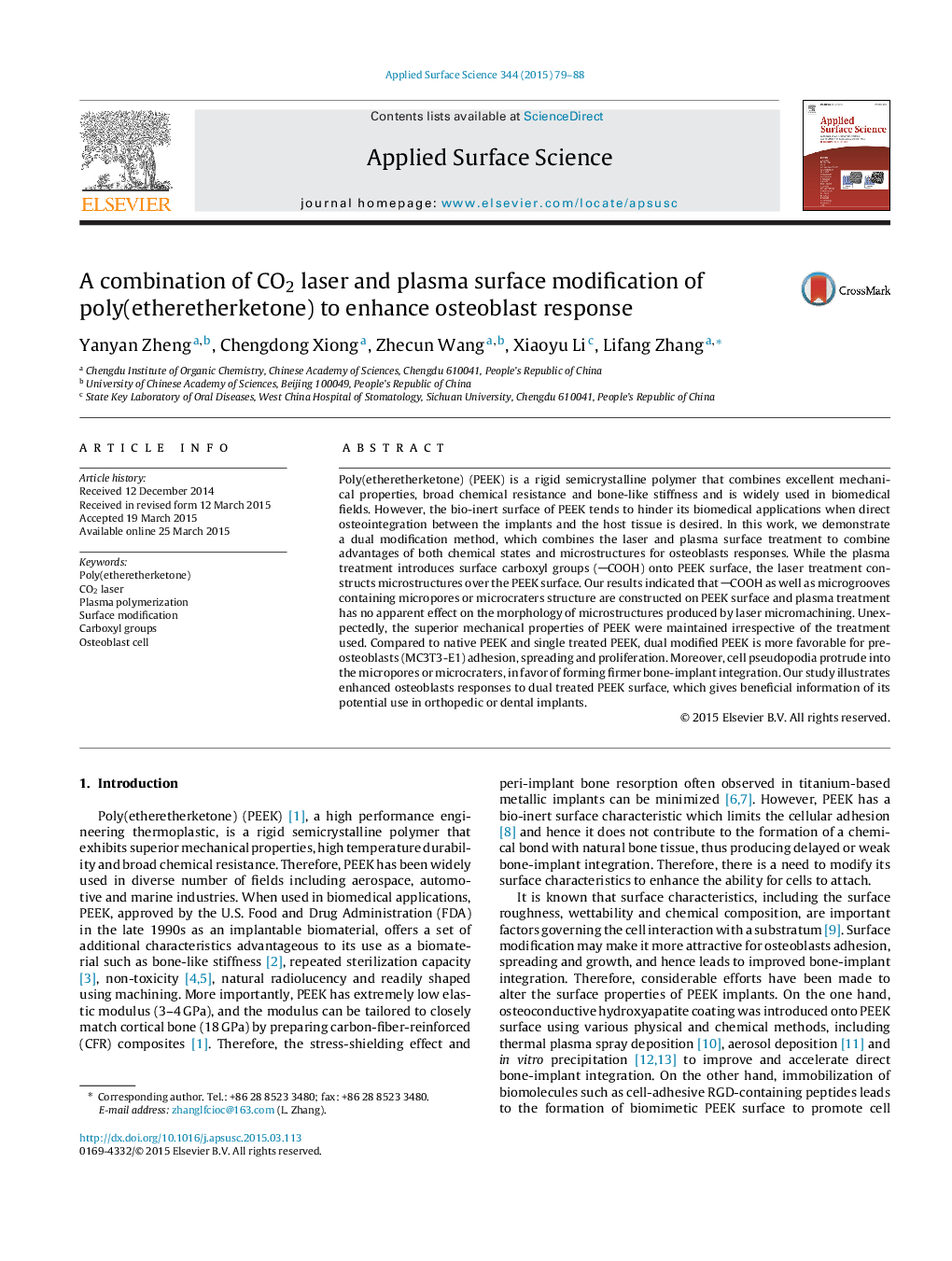| Article ID | Journal | Published Year | Pages | File Type |
|---|---|---|---|---|
| 5349458 | Applied Surface Science | 2015 | 10 Pages |
Abstract
Poly(etheretherketone) (PEEK) is a rigid semicrystalline polymer that combines excellent mechanical properties, broad chemical resistance and bone-like stiffness and is widely used in biomedical fields. However, the bio-inert surface of PEEK tends to hinder its biomedical applications when direct osteointegration between the implants and the host tissue is desired. In this work, we demonstrate a dual modification method, which combines the laser and plasma surface treatment to combine advantages of both chemical states and microstructures for osteoblasts responses. While the plasma treatment introduces surface carboxyl groups (COOH) onto PEEK surface, the laser treatment constructs microstructures over the PEEK surface. Our results indicated that COOH as well as microgrooves containing micropores or microcraters structure are constructed on PEEK surface and plasma treatment has no apparent effect on the morphology of microstructures produced by laser micromachining. Unexpectedly, the superior mechanical properties of PEEK were maintained irrespective of the treatment used. Compared to native PEEK and single treated PEEK, dual modified PEEK is more favorable for pre-osteoblasts (MC3T3-E1) adhesion, spreading and proliferation. Moreover, cell pseudopodia protrude into the micropores or microcraters, in favor of forming firmer bone-implant integration. Our study illustrates enhanced osteoblasts responses to dual treated PEEK surface, which gives beneficial information of its potential use in orthopedic or dental implants.
Keywords
Related Topics
Physical Sciences and Engineering
Chemistry
Physical and Theoretical Chemistry
Authors
Yanyan Zheng, Chengdong Xiong, Zhecun Wang, Xiaoyu Li, Lifang Zhang,
